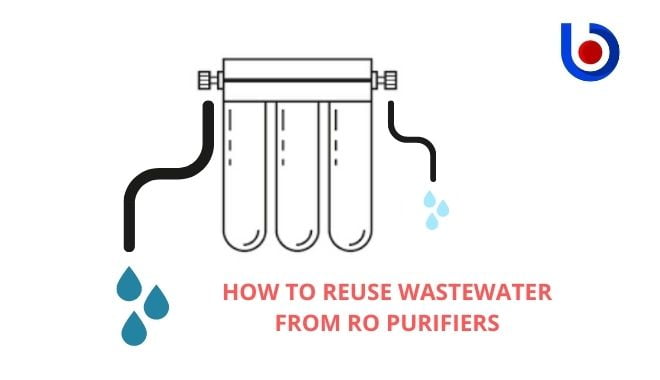How To Reuse Wastewater From RO Purifer

Worried about buckets of water that are ejected by your reverse osmosis (RO) water purifier?
The wastewater has higher total dissolved solids (TDS) levels than your input water. For example, in Cuttack, we tested one RO water purifier that filtered borewell water having TDS around 400 mg/l. The output water had TDS of around 100 mg/l while the reject waste water was around 650 mg/l.
Before reusing, it is important to note that RO purifiers are not required if your water level is soft enough. If the TDS level is under 500mg/l, you are fine with a UV or candle-based filter.
Also Read: Do RO Water Purifiers Give ‘Sabse Sudh Pani’?
If you already have an RO purifier, here’s what you can do with the waste water:
1. Check the TDS level of the wastewater using a simple meter that costs around Rs 300. You can alternatively get it tested with a water purifier company.
2. Gardening
You can use the reject water for gardening if the TDS is below 2,100 mg/l. It would be ideal to dilute it with fresh water if the TDS is high. Also, test the water on a few of your plants first. If the sodium content is higher than 60 per cent, it can affect the soil.
3. Mopping floors
This is one of the best uses of wastewater from RO purifiers. Just save the water in a bucket or drum and use it directly. This can reduce your water use by 50-100 litres for an average house. If you see stains on your floor, dilute the wastewater with fresh water.
4. Washing cars
Another good use of this water is to wash vehicles. This can save anywhere from a bucket to 100 litres depending on how you wash. While we are at this, it is not very important to wash vehicles or a regular basis. Sometimes, a wipe is enough.
5. Flushing
You don’t have to flush your toilet using fresh water. You would, however, require to make changes to your plumbing to redirect wastewater from RO to your cisterns. One flush is around 5-10 litres of water.
6. Washing dishes
This is something you have to use cautiously. If the TDS is high with calcium and magnesium, white deposits can form. Similarly, it is best avoided for washing clothes as well.
7. Recharge groundwater
Instead of leaving the water to go to the drain, you can divert it to a soak pit or simply any earthy terrain outside your house. This will help recharge the water levels in and around your house.
8. Air cooler
If you live in a place with low humidity, you can use this water in your air coolers.
9. Store it
If you do not wash your vehicles everyday, you can get a big drum and divert the wastewater using a simple flexible plastic pipe to the outlet. You can also get a small submersible pump like the ones used in coolers to use this water.
10. Adjust the purifier or replace it
Most RO purifiers can adjust the output TDS. Ask a service technician to do this for you. It can reduce water wastage by a bit. You can replace the purifier with a modern one that wastes less water. If you are buying, do check the TDS level and see if you need a RO purifier at all. UV purifiers work perfectly well if the TDS is within permissible limits, ie, less than 500 mg/l.

Comments are closed.